
伤口世界
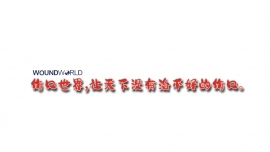
- 星期一, 21 8月 2023
WOUND CARE AND SKIN TONE--SIGNS, SYMPTOMS AND TERMINOLOGY FOR ALL SKIN TONES
EXPERT PANEL
Luxmi Dhoonmoon (Co-chair), Tissue Viability Nurse Consultant, Central and North West London NHS Foundation Trust
Harikrishna K.R. Nair (Co-chair), Head and Consultant of Wound Care Unit, Department of Internal Medicine, Kuala Lumpur Hospital, Malaysia; Professor, Faculty of Medicine, Lincoln University Malaysia; Professor, Institute of Health Management; Austria, Adjunct Professor, Department of Surgery, Institute of Medical Sciences, Banares Hindu University, India; Executive Director, College of Wound Care Specialists
Zulfiqarali Abbas, Endocrinologist, Department of Internal Medicine, Muhimbili University of Health and Allied Sciences, Dar es Salaam; Abbas Medical Centre, Dar es Salaam, Tanzania
Ethel Andrews, Wound Specialist, Life Brenthurst Hospital/Netcare Mulbarton Hospital, Johannesburg, South Africa; Visiting Lecturer, University of Witwatersrand; Past President, South African Burn Society; International Burns Society Nurse Award recipient 2022
Simone McConnie, Diabetic Footcare Specialist Podiatrist, Comfeet Foot Care Clinic, Barbados
Jennifer Pearson, Head of Nursing Royal Orthopaedic Hospital Birmingham; BAME Nurse of the Year 2022; Regional Lead Chief Nursing Officer (England), Black Minority Ethnic Strategic Advisory Group
Mohamed Waheed, Plastic Surgeon, Head of the Department of Surgery, Indira Gandhi Memorial Hospital, Maldives
Mandika Wijeyaratne, Head of the Department of Surgery, Faculty of Medicine, University of Colombo, Sri Lanka
PUBLISHED BY:
Wounds International 108 Cannon Street London EC4N 6EU, UK
Tel: + 44 (0)20 7627 1510 该Email地址已收到反垃圾邮件插件保护。要显示它您需要在浏览器中启用JavaScript。 www.woundsinternational.com © Wounds International, 2023
FOREWORD
While patient populations vary across the world, evidence shows that in many areas there are discrepancies in wound care due to variations in skin tone; for example, patients with dark skin are more likely to be diagnosed with higher-category pressure ulcers (PUs) (Oozageer Gunowa et al, 2017). This is due to a lack of accurate assessment and early identification; for example, the initial "redness" seen on light skin may not be present in dark skin and thus be missed in the initial assessment. The majority of existing evidence around skin tones in wound care is in the field of PUs, with a lack of evidence identified in other conditions and wound types (Oozageer Gunowa, 2022).
A literature search published in 2022 (Oozageer Gunowa, 2022) highlighted gaps in the evidence around skin tones and the need for further research in this area of patient care. Further, in wound care education, there is a need for the inclusion of dark skin tones in casestudies and photographs as well as to address the gap in bias around light skin tones and lack of understanding of how to assess different skin tones (Dhoonmoon et al, 2021).
Skin changes in people with dark skin tones are not observed quickly enough on a global scale. ‘Global Majority’ is a collective term for people who are Black, Asian, Brown, dual-heritage, indigenous to the global south, and or have been racialised as 'ethnic minorities'; globally, these groups currently represent approximately 80% of the world's population (Campbell-Stephens, 2020).
To address these gaps, a group of global experts convened for an online meeting in September 2022 to develop this international consensus document, focusing on inclusive language, assessment, and treatment of all skin tones, to improve patient outcomes. The members of the expert group work in different areas of the world, with differing patient groups and within different healthcare systems; the aim of this meeting and the resulting document was to learn from shared experiences and provide guidance on best practice to improve outcomes for all patients, with a differing range of skin tones.
This international consensus document aims to:
▆ Provide practical guidance on accurate assessment and diagnosis in all skin tones
▆ Provide guidance on language and descriptors to use, aiding clear patient communication
▆ Discuss different geographical and cultural considerations across the globe
▆ Dispel myths relating to skin tones
▆ Focus on the future, the need for education and how outcomes can continue to improve.
The overall aim is to improve clinician confidence in delivering best practice to all patients, with the ultimate aim of improving patient experiences and outcomes.
Luxmi Dhoonmoon (Co-chair)
Harikrishna K. R. Nair (Co-chair)
Patient assessment is the foundation of all care. Effective treatment cannot be commenced without
accurate and thorough patient-centred assessment. Assessment may also mean that key preventative
measures can be put in place that reduce a patient’s risk of requiring further care.
A thorough inspection of the skin should be performed, as well as a baseline knowledge of identifying
and taking into account the patient's baseline skin tone so that any changes to the patient's skin
can be monitored and identified early (Dhoonmoon et al, 2021). A lack of early identification of skin
changes can mean that important signs are missed, which can lead to further and preventable skin
and tissue breakdown and damage.
A holistic wound assessment considers the entire patient, including their health, environment,
physical, psychological and psychosocial factors, as well as their skin tone. Although not well
documented, different skin tones respond differently to injury, pressure, healing and treatment.
Therefore, it is critical that the assessment and any subsequent care are tailored to the individual
patient and their needs from the beginning.
A holistic assessment should include:
▆ The patient’s skin including their skin tone
▆ Their overall health
▆ Their medical history
▆ Their wound or skin condition
▆ Their lifestyle and environment
▆ Their individual needs and preferences
▆ Their education and ability to follow information and guidance, especially when caring for a wound at home
▆ Their socioeconomic status, as treating skin conditions in a private hospital setting can be expensive, and treatments may take longer to work depending on skin type and vascular status.
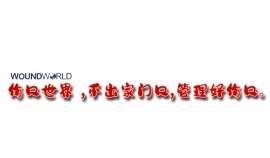
- 星期五, 18 8月 2023
Use of nano-oligosaccharide factor (sucrose octasulfate) dressing based on Technology Lipido-Colloid (TLCNOSF) as an interface layer with negative pressure wound therapy
Author: Theophila Lan Si’Ai
Theophila Lan Si’Ai is Senior Podiatrist, Singapore General Hospital, Singapore
Complex and complicated wounds (CCWs) tend to exhibit slow wound healing and poor prognoses despite good standards of care. Numerous literature demonstrated the efficacy of TLC-NOSF dressing (UrgoStart®) in healing of both acute and chronic wounds. The author thus hypothesised that inclusion of TLCNOSF dressing in dressing regimes would enhance wound healing and improve outcomes in CCW. This paper successfully verifies the hypothesis on three such wounds, with good wound healing outcomes achieved.
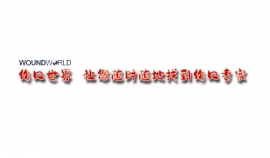
- 星期四, 17 8月 2023
Use of artificial intelligence in wound care education
Author:
Corey Heerschap
Corey Heerschap is Wound/ Ostomy Clinical Nurse Specialist at Royal Victoria Regional Health Centre in Barrie, ON, Canada, and a PhD student at Queens University in Kingston, ON, Canada. He is the President-Elect of Nurses Specialized in Wound, Ostomy and Continence Canada, Inaugural Panel Member of the Canadian Pressure Injury Advisory Panel, and Education CoLead for the Commonwealth Wound Care Resource Alliance.
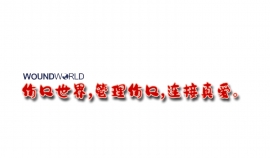
- 星期三, 16 8月 2023
Ten top tips: pressure ulcers on the heels
Author:
Joyce Black
Joyce Black is Professor, College of Nursing, University of Nebraska Medical Center, Omaha, Nebraska, US
Despite the frequency of pressure ulcers on the heels, little is written about them. While these ten top tips will not fill the literature gap, it may help you with this common problem.
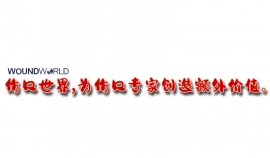
- 星期二, 15 8月 2023
Single-use NPWT in the management of open, ‘hard-to-heal’ wounds: a case series
A case series was conducted to demonstrate the safe and effective use of a 14-day Single Use Negative Pressure Wound Therapy System (sNPWT) in the management of static, ‘hard-to-heal’ wounds. When used in conjunction with optimal wound care strategies, including holistic assessment and comprehensive patient empowerment and education, the use of sNPWT resulted in the closure of all chronic wounds in this case series despite complex histories. This case series demonstrates enhanced results when a proactive, holistic and patient-centred approach is adopted in conjunction with sNPWT.
Authors:
Hayley Ryan and Joanne Handsaker
Hayley Ryan is Director of Wounds Rescue/Wounds Australia Board Director & Chair, Wound Clinical Nurse Consultant (WCNC);
Joanne Handsaker is Clinical Strategy –Global Clinical Strategy Specialist, Smith and Nephew
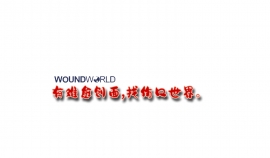
- 星期一, 14 8月 2023
Shared wound care and the implementation tipping point: patient engagement to standardise practice
Practitioners have advocated for new ways of working, such as shared wound care, to address the challenges in chronic wound management. Shared wound care practiced alongside the use of long-wear advanced foam dressings has the potential to optimise community wound care*; releasing time for nurses and healthcare systems, and empowering patients. Many practitioners already use elements of shared wound caren with patients but require support to implement the approaches more formally and reduce practice variation. This article will discuss shared wound care from an individual practitioner’s perspective, addressing how shared wound care is beneficial, accessible, clinically effective, scalable, and implementable, and facilitate discussions about standardising implementation within their health system.
*Wear time of up to 5 to 7 days (Simon and Bielby, 2014; Joy et al, 2015; Smith+Nephew, 2016b; 2016a)
Authors:
Amanda Loney, Certified Nurse Specialised, Wound, Ostomy and Continence (WOCC(C)), Bayshore Home Care Solutions Hamilton, Ontario, Canada;
Catherine Milne, Advanced Practice WOC Nurse in Bristol, Connecticut, Clinical Instructor Yale School of Nursing, Connecticut, United States
